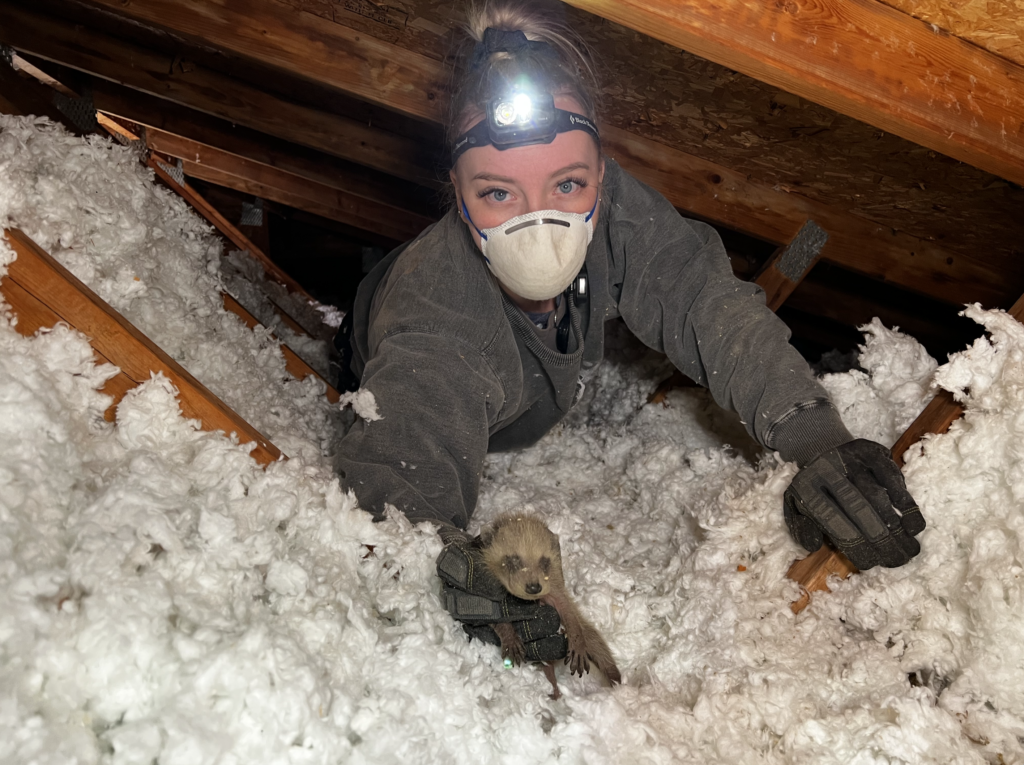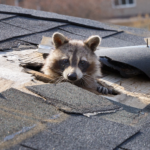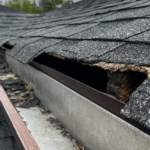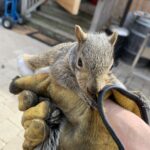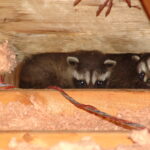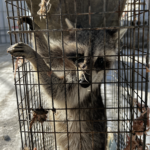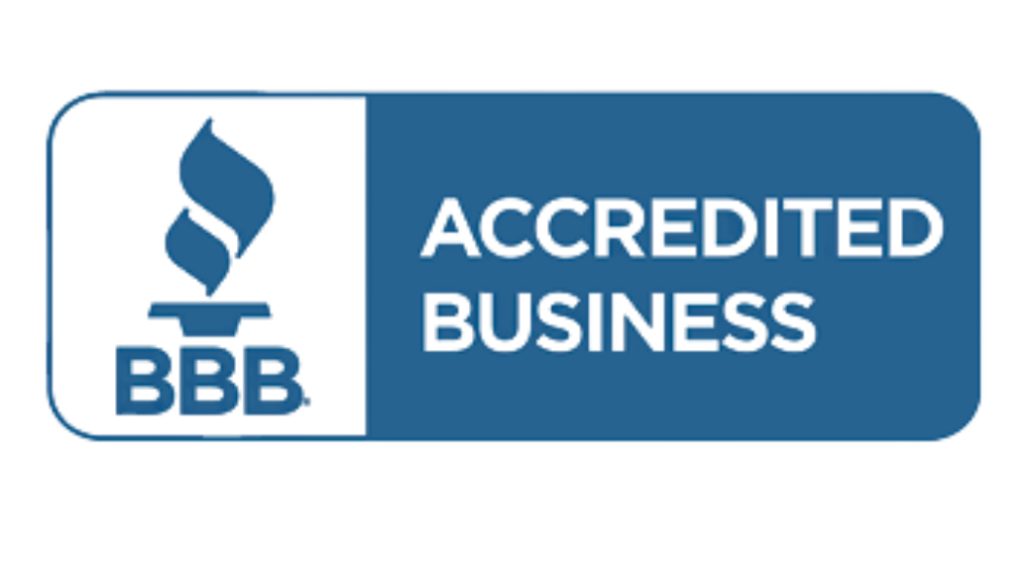Having raccoons in your attic can be a stressful and unsettling experience. These clever creatures often seek out attics for warmth and shelter, but their presence can lead to significant damage and health risks.
At Gates Wildlife, we specialize in humane methods for removing raccoons and ensuring we keep them out. In this article, we’ll guide you through the process of identifying the signs of raccoons in your attic and some tips for how we remove them safely and humanely.
Disclaimer: Raccoons can be dangerous and carry diseases. For the safety of both your family and the animals, we recommend calling a wildlife professional.
Signs You have Raccoons In Your Attic
Raccoons in your attic can cause a lot of trouble if not dealt with quickly. They’re clever and resourceful animals that can find their way into your home, looking for a safe place to nest. Here are some common signs that raccoons may have taken up residence in your attic:
- Strange Noises: If you hear scratching, thumping, or chattering sounds, especially at night, it’s a strong indicator that raccoons are in your attic. They are nocturnal and become active after dark.
- Droppings: Raccoon droppings are larger than those of most rodents and can be found in piles. Look for them in corners and along the attic’s edge.
- Damaged Insulation: Raccoons will often tear up insulation to make a cozy nest. Check for torn or scattered insulation in your attic.
- Footprints: Raccoon footprints are distinctive, with long fingers and a thumb-like toe. You might see them in dusty areas or along paths they use.
- Odors: A strong, musty smell can indicate the presence of raccoons. Their urine and droppings create a noticeable odor over time.
- Entry Points: Check for holes, gaps, or torn shingles where raccoons could have entered. They are excellent climbers and can squeeze through surprisingly small openings.
If you notice any of these signs, it’s important to act quickly to remove the raccoons humanely and prevent further damage to your home.
Can Raccoons Damage Your Attic or Roof?
Raccoons might seem harmless, but their presence in your attic can lead to significant damage and costly repairs. These curious and determined animals are known for their ability to chew, tear, and scratch through various materials, causing a range of problems. Here’s how their presence can lead to costly repairs:
Wire Damage
Raccoons have sharp teeth and love to chew on things, including electrical wires. This can be extremely dangerous as it increases the risk of electrical fires. Damaged wires also mean you could face costly repairs to your home’s electrical system.
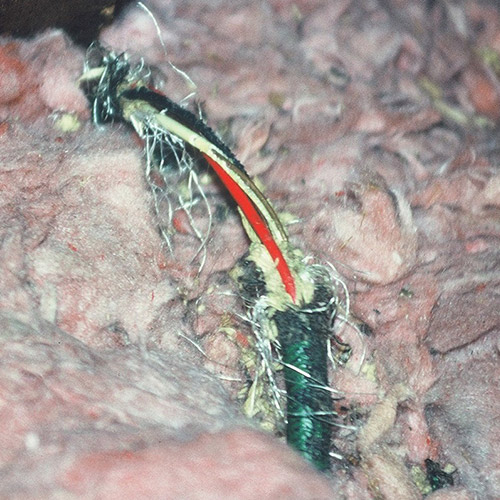
Insulation Damage
To create a cozy nest, raccoons will tear apart your attic insulation. This not only makes your attic a mess but also reduces the effectiveness of your insulation, leading to higher energy bills. Damaged insulation might need to be replaced, which can be expensive and time-consuming.
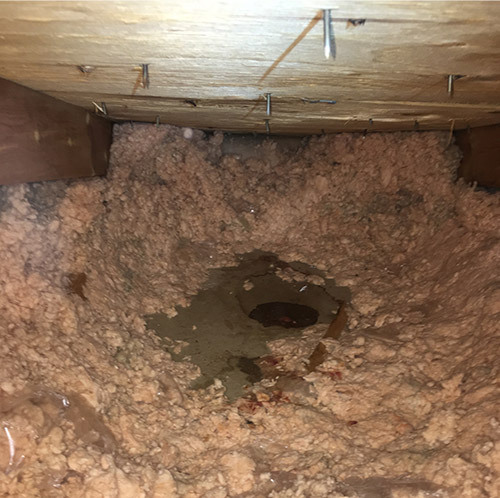
Roof Damage
Raccoons are strong and persistent, often damaging roofs as they try to get into your attic. They can tear off shingles, create holes, and damage vents. This not only compromises your roof’s integrity but can also lead to leaks and water damage inside your home.
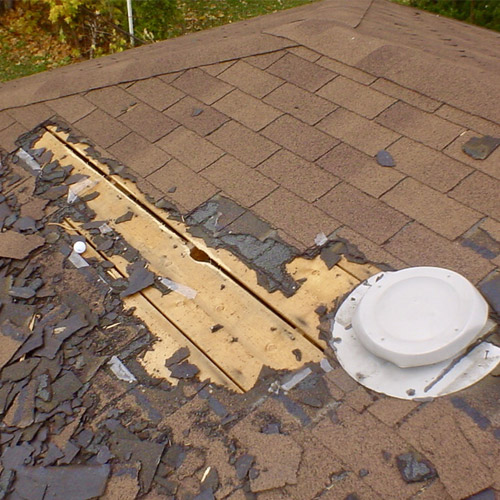
Our 5 Proven Tips & Tricks for Removing Raccoons From Your Attic
Dealing with raccoons in your attic requires a careful and humane approach. These intelligent creatures can be tricky to remove, but with the right techniques, you can ensure they leave safely and stay out for good. Here are our top five tips and tricks to help you remove raccoons effectively:
1. Inspection of Entry Points
Start by inspecting your attic and roof for entry points. Raccoons can enter through damaged shingles, vents, and small gaps. Check for signs of wear and tear around these areas to identify where they might be getting in.
Look for loose or torn shingles, bent or damaged vents, and small holes or gaps. Once identified, you can plan to seal these points after removing the raccoons. Regular inspections can also help you spot new entry points before raccoons find them.
2. Locate the Raccoon Mother and Her Babies
Raccoons often bring their babies into attics to keep them safe. However, locating the mother and her babies should be done by a professional. The mother raccoon is very protective and can become aggressive if she feels threatened.
Additionally, raccoons can carry diseases, including in their feces, posing health risks. If you suspect a raccoon family in your attic, it’s best to call a wildlife removal expert. We have the tools and knowledge to safely locate and handle the mother and her babies without causing harm.
3. One-Way Doors
One-way doors are an effective and humane way to encourage raccoons to leave your attic. These devices allow the raccoons to exit but prevent them from re-entering. This method works well if you are unable to chase the mother raccoon out directly.
Install the one-way door over the main entry point and monitor it to ensure all raccoons have left. Once all the raccoons have exited, you can remove the one-way door and secure the entry point. It’s a straightforward method that minimizes stress for the animals and helps you avoid direct confrontation.
4. Repair the Entry Hole
After ensuring all raccoons have left, it’s crucial to repair the entry hole to prevent them from coming back. Repair any damaged shingles, replace broken vents, and secure a heavy gauge galvanized screen over the entry hole.
Make sure all potential entry points are sealed tightly. Reinforcing vulnerable areas with strong materials will help keep raccoons and other wildlife from re-entering your attic. Regular maintenance and inspections will help keep your attic secure in the future.
5. Reunite The Mother Raccoon With Her Young
At Gates Wildlife, we use a specifically-designed release box to protect the young raccoons from the elements until the mother can collect them. This humane approach ensures that the mother and her babies are safely reunited outside your home.
The release box provides a temporary shelter until the mother relocates her young to a new, safer location. We place the release box near the entry point, making it easy for the mother to find and retrieve her babies. This method reduces stress on the animals and ensures they are relocated together.
To learn more about how we remove raccoons from attics, check out our video below.
What Not To Do When Raccoons Are In Your Attic
When you discover raccoons in your attic, it’s crucial to handle the situation carefully to ensure your safety and the humane treatment of the animals. Taking the wrong steps can lead to health risks and potential harm to both you and the raccoons.
The best solution is always to contact a wildlife professional. But if that’s not an available option for you, here are some key things to avoid and keep in mind:
Wear a Mask & Gloves
Always wear a mask and gloves when dealing with raccoons or their nesting areas. Raccoon droppings can carry harmful parasites and diseases, including raccoon roundworm, which can be dangerous to humans. Protect yourself by preventing direct contact with contaminants.
The mask will help you avoid inhaling dust from dried droppings, which can carry airborne pathogens. Gloves will protect your skin from direct contact with potentially harmful substances. Ensuring you have proper protective gear is a vital first step in managing the situation safely.
Avoid Direct Contact with Raccoons
Raccoons, especially mothers protecting their young, can become aggressive if they feel threatened. Avoid trying to handle or approach the raccoons on your own. Their unpredictable behavior can pose a danger to you.
Raccoons have sharp claws and teeth, and an encounter with a defensive mother can lead to serious injuries. Additionally, direct contact with raccoons can expose you to diseases they may carry. It’s best to observe from a safe distance and avoid any attempts to physically interact with the animals.
Be Cautious Around Nests
If you discover a raccoon nest, it’s best to leave it alone and contact professionals. Disturbing a nest can provoke the mother and increase the risk of disease exposure. Nests are often hidden in hard-to-reach areas, making it difficult to remove the raccoons without proper tools and expertise.
The professionals at Gates Wildlife are trained to handle these situations safely and humanely. They can ensure that the mother and her babies are removed without causing harm, and that your attic is restored to a safe condition.
Will Raccoons Removed From the Attic Come Back?
Raccoons are highly territorial. Once they find a safe and warm place like your attic, they are likely to consider it their home. This makes raccoon removal from the attic particularly challenging, as these animals are inclined to return to familiar and previously occupied spaces.
Unlike some animals, such as birds and bats, which may not attempt to come back after being removed, raccoons have a strong homing instinct that can lead them back to your attic if it remains accessible.
The duration of time the raccoons have spent in your attic plays a crucial role in their likelihood of returning. If a raccoon has been living in your attic for an extended period and has established a nest or den, it is more likely to try to return after removal.
These animals become accustomed to their surroundings and may have a more substantial attachment to their nesting site. On the other hand, if the raccoon is a recent intruder or has not yet settled in, the chances of it trying to come back are significantly lower.
One of the most critical aspects of raccoon removal from the attic is the implementation of effective wildlife prevention measures. After the initial removal, taking steps to seal all potential entry points is essential. This includes:
- Repairing damaged shingles
- Securing vents
- Covering any holes or gaps with heavy gauge galvanized screens
Additionally, removing food and trash sources, such as bird feeders and accessible garbage, will make your home less attractive to raccoons. Proper prevention measures significantly reduce the likelihood of raccoons returning to your attic.
Call Gates Wildlife for Professional Help
Dealing with raccoons in your attic can be complex and risky. For the safety of both you and the raccoons, it’s best to hire a professional wildlife removal service like Gates Wildlife. We have the experience, tools, and knowledge to handle the situation humanely and effectively.
We ensure that all raccoons are safely removed, entry points any any other potential future openings are sealed, If you have any other questions about raccoon removal, contact a wildlife professional here at Gates Wildlife.
